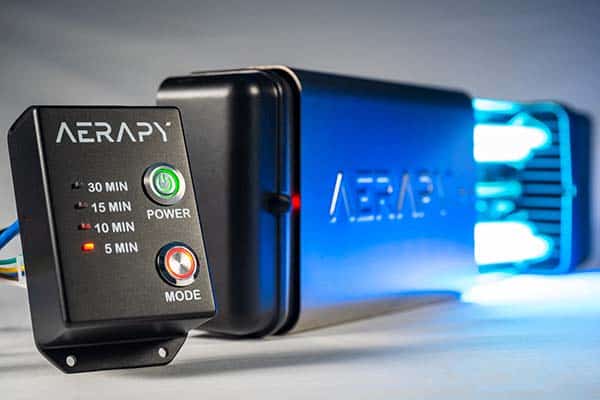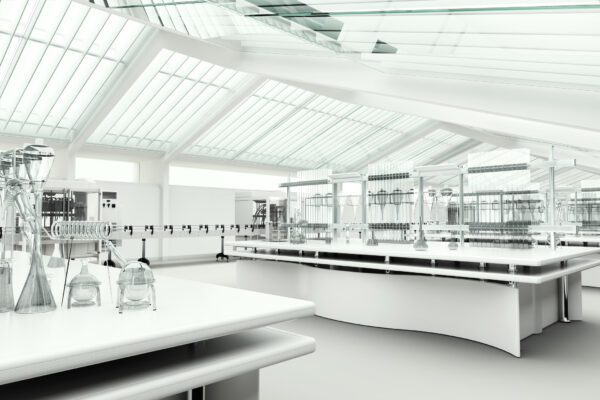Future-Proofing Your Space: Integrating UV Surface Disinfection for Ongoing Protection
Unveiling the Conveniences of UV Disinfection: Making Sure Clean and Disinfected Rooms
In the age of increased awareness bordering health and tidiness, the relevance of efficient sanitation approaches can not be overstated. While typical cleaning techniques have actually long been trusted, developments in modern technology have presented an innovative service that ensures clean and disinfected spaces: UV sanitation. By using the power of ultraviolet light, this method has actually gained acknowledgment for its capacity to eliminate dangerous pathogens and offer a comprehensive sanitization procedure. The advantages of UV disinfection prolong much beyond its efficiency. This discussion will check out the scientific research behind UV sanitation, its performance on numerous pathogens, its applications in different settings, and the advantages it holds over standard approaches. In addition, we will certainly explore the security considerations that should be considered when applying UV sanitation. Prepare to reveal a brand-new measurement of sanitation and uncover the untapped possibility of UV sanitation.

The Scientific Research Behind UV Disinfection
UV disinfection is a medically proven technique that makes use of ultraviolet light to eliminate dangerous microbes from surfaces and water. The science behind UV disinfection depends on the capability of UV-C light to harm the DNA and RNA of microorganisms, making them incapable to replicate and creating their ultimate fatality. UV-C light drops within the wavelength series of 200 to 280 nanometers, which is extremely reliable in damaging bacteria, viruses, and other pathogens.
When exposed to UV-C light, the genetic product of microbes soaks up the power from the light, leading to the formation of thymine dimers. These dimers disrupt the typical duplication and transcription procedures of the microbes, hindering their capacity to duplicate and survive (uv surface disinfection). The DNA and RNA damages created by UV-C light is dangerous to the microbes, making UV sanitation a trusted and reliable approach for eliminating a wide variety of virus
UV disinfection is especially advantageous in environments where traditional chemical anti-bacterials might be inadequate or unwise. It is a non-chemical technique that does not leave any deposits or unsafe by-products, making it risk-free for use in food processing, healthcare centers, water treatment plants, and various other sectors. UV sanitation is environmentally pleasant, as it does not contribute to the development of antibiotic-resistant germs or various other damaging pollutants.
Efficiency of UV Disinfection on Virus
The effectiveness of UV sanitation in getting rid of pathogens has actually been extensively examined and proven in countless scientific researches. UV radiation has the capability to suspend a large range of bacteria, consisting of bacteria, infections, and fungi, by damaging their DNA or RNA. This avoids them from replicating and triggering infections.
One research released in the American Journal of Infection Control discovered that UV disinfection was effective in minimizing the presence of numerous drug-resistant microorganisms in health center spaces. An additional research study performed by the National Institute for Occupational Security and Wellness demonstrated that UV sanitation had the ability to eliminate 99.9% of the influenza infection on surface areas.
UV disinfection has actually additionally revealed promise in combating the spread of healthcare-associated infections (HAIs) According to a research study released in The Lancet, the usage of UV-C light in addition to basic cleaning procedures dramatically reduced the incidence of HAIs in a healthcare facility setup.
Additionally, UV disinfection has actually verified to be reliable versus arising virus, such as the severe intense breathing disorder coronavirus 2 (SARS-CoV-2), which triggers COVID-19. A research study performed by the National Arising Transmittable Diseases Laboratories showed that UV-C light can suspend the infection on surface areas within secs.
Applications of UV Disinfection in Various Setups
With its tried and tested performance in getting rid of microorganisms, UV disinfection has discovered applications in a selection of settings. One of the most common locations where UV sanitation is made use of remains in health care facilities. UV innovation is used to disinfect patient rooms, operating rooms, and various other high-touch surface areas, minimizing the danger of healthcare-associated infections. On top of that, UV sanitation is also being implemented in food handling plants and dining establishments to guarantee the safety of food products and protect against the spread of foodborne diseases. UV disinfection is additionally advantageous in water therapy plants, where it is utilized to kill harmful microorganisms and provide secure drinking water.
One more essential application of UV disinfection is in the air filtration sector. UV air purifiers are made use of in domestic, business, and industrial setups to get rid of air-borne bacteria, viruses, and mold and mildew spores. This innovation is particularly beneficial in environments where people are extra susceptible to breathing infections, such as healthcare facilities, schools, and office structures.
Moreover, UV disinfection is significantly being made use of in public transport systems, such as trains and buses, to keep clean and sterilized areas for guests. UV light is employed to disinfect surface areas and air inside the vehicles, decreasing the danger of spreading out transmittable diseases.
Advantages of UV Disinfection Over Typical Approaches
In contrast to conventional techniques, UV sanitation supplies a series of distinctive benefits that make it a preferable choice in different markets and setups. One substantial advantage is its effectiveness against a large variety of microorganisms, including viruses, fungi, and germs. Unlike chemical disinfectants that may have limited efficacy against specific pathogens, UV disinfection is a non-selective procedure that can eliminate or suspend a wide range of hazardous organisms.
One more benefit of UV disinfection is its ability to provide reliable and quick sanitation. Typical sanitation techniques usually require longer get in touch with moved here times or several steps to achieve the wanted degree of disinfection. On the other hand, UV light can provide continuous and immediate sanitation, lowering downtime and boosting performance in numerous applications.
UV disinfection also offers a secure and eco-friendly alternative to traditional sanitation methods. uv surface disinfection. Unlike chemical representatives, UV light does not leave any hazardous deposits or spin-offs, making it suitable for usage in sensitive settings such as food processing centers, health care setups, and water treatment plants
Furthermore, UV sanitation is a cost-efficient option in the future. While the ahead of time investment for UV sanitation systems may be greater than standard methods, the functional costs are generally reduced. UV lights have a these details lengthy lifespan and call for marginal upkeep, leading to minimized labor and replacement prices.
Safety And Security Considerations for UV Disinfection
Taking into consideration the potential dangers related to UV sanitation, it is vital to attend to the safety and security considerations associated with implementing this innovation. UV sanitation makes use of ultraviolet light to kill or inactivate bacteria, making it a reliable method for sterilizing different surface areas and objects. It is important to understand that UV radiation can likewise present threats to human wellness if correct safety measures are not followed.
Primarily, straight exposure to UV radiation can create injury to the skin and eyes. Long term exposure can result in sunburn, skin damage, and even a boosted threat of creating skin cancer cells. Therefore, it is crucial to guarantee that UV disinfection systems are correctly enclosed and geared up with safety attributes such as automatic shut-off systems or movement sensing units to stop accidental direct exposure.

Furthermore, correct training and education and learning are important for those in charge of operating UV sanitation systems. They ought to understand the potential threats, understand the safety and security protocols, and understand how to manage and maintain the devices correctly.
Final Thought
To conclude, UV disinfection supplies various advantages in guaranteeing tidy and sanitized areas. Its performance in eliminating microorganisms has actually been shown with clinical research. UV sanitation can be used in various settings, consisting of medical care facilities, food processing plants, and water treatment systems. Contrasted to conventional techniques, UV sanitation has benefits such as faster disinfection times, very little chemical use, and no harmful by-products. Safety and security considerations have to be considered to avoid prospective dangers connected with UV direct exposure.
UV disinfection is a clinically tested technique that uses ultraviolet light to eliminate damaging bacteria from surfaces and water. The look here DNA and RNA damages created by UV-C light is deadly to the bacteria, making UV disinfection a efficient and trusted method for eliminating a wide array of virus.
One more advantage of UV disinfection is its capacity to give effective and fast disinfection. UV disinfection makes use of ultraviolet light to eliminate or inactivate microbes, making it a reliable approach for sterilizing various surface areas and things. Compared to conventional methods, UV sanitation has benefits such as faster sanitation times, minimal chemical use, and no unsafe results.